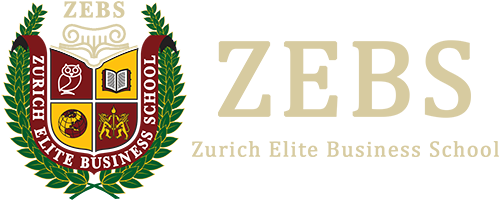
Six Sigma: Define and Measure
An introduction to the Six Sigma methodology and the DMAIC cycle for process improvement with a focus on the Define and Measure phases, including basic statistics for understanding sampling plans and calculating process capability.
About this course
*The current course run ends on June 30, 2021. If you think you won’t have enough time to finish, you can enroll in the run starting on May 01, 2021 and ending on June 30, 2022 *
Understand the background and meaning of Six Sigma and the five steps of the DMAIC process improvement flow: Define, Measure, Analyze, Improve and Control. Discuss what “Quality” means and how to identify the Voice of the Customer.
You will learn how to set an improvement project goal, calculate process yield, and identify Critical-to-Quality parameters.
You will learn how to map a process and to use the necessary statistical techniques to establish the baseline performance of a process and to calculate the process capability.
To complement the lectures, we provide interactive exercises, which allow learners to see the statistics “in action.” Learners then master the statistical concepts by completing practice problems. These are then reinforced using interactive case studies, which illustrate the application of the statistics in quality improvement situations.
Upon successful completion of this program, learners will earn the TUM Lean and Six Sigma Yellow Belt certification, confirming mastery of Lean Six Sigma fundamentals to a Green Belt level. The material is based on the American Society for Quality (www.asq.org) Body of Knowledge up to a Green Belt Level. The Professional Certificate is designed as preparation for a Lean Six Sigma Green Belt exam.
At a glance
- Institution: TUMx
- Subject: Business & Management
- Prerequisites:
This course reviews basic statistics used in Six Sigma and quality management, applying them to quality problems and methods. Therefore, basic math skills are necessary.
- Language: English
- Video Transcript: English
What you’ll learn
- To understand the background and meaning of the Six Sigma methodology and the role of the DMAIC process improvement cycle.
- To identify the Voice of the Customer and translate into Critical-to-Quality parameters.
- To understand the concept of random variables, probability mass functions, and probability density functions.
- To calculate probabilities using the Normal distribution.
- To understand how the Central Limit Theorem applies to sampling and how to set up sampling plans.
- To understand the importance of a Measurement System Analysis in a Six Sigma project.
- To calculate Process Yield and Process Capability.
- To perform a risk assessment using a Failure Modes and Effects Analysis.
- How to apply the Define and Measure phases of the DMAIC cycle in your work or research, in order to identify problems and quantitatively assess the impact of process changes using statistical analysis.
Syllabus
Week 1: Six Sigma Introduction
Introduction to the Six Sigma Methodology and the DMAIC process improvement cycle. Understand the contributors to the cost of quality. Discuss the difference between defects and defectives in a process and how to calculate process yield, including a comparison of processes of different complexity using the metric DPMO.
Week 2: DEFINE – Defining the Problem
Discuss how to understand customer expectations, using the Kano Model to categorize quality characteristics. Start the first and difficult task of a Six Sigma project, Defining the Problem, and review the key content in a Project Charter.
Week 3: MEASURE – Statistics Review
Review of random variables and probability distributions used commonly in quality engineering, such as Binomial, Poisson, and Exponential. Cover descriptive statistics, emphasizing the importance of clearly communicating the results of your project.
Week 4: MEASURE – Normal Distribution
Learn the characteristics of the Normal Distribution and how to use the Standard Normal to calculate probabilities related to normally distributed variables. Cover the Central Limit Theorem, and how it relates to sampling theory.
Week 5: MEASURE – Process Mapping
Introduce Process Mapping, including SIPOC and Value Stream Mapping. We identify the Critical-to-Quality characteristic for a Six Sigma project
Week 6: MEASURE – Measurement System Analysis
Learn the basics of Measurement Theory and Sampling Plans, including
Precision, Accuracy, Linearity, Bias, Stability, Gage Repeatability & Reproducibility
Week 7: MEASURE – Process Capability
Introduction to Process Capability and the metrics CP/CPK for establishing our baseline process performance.
Week 8: Quality Topics and Course Summary
Cover the basics of Tolerance Design and the risk assessment tool failure Mode and Effects Analysis (FMEA).
Review the complete Six Sigma Roadmap before summarizing and closing the course.
Learner testimonials
“It is very fulfilling experience to complete the requirements of this course. The new knowledge I gained from the three courses are awesome. This course really like a brick and mortar learning from the start and exceeded my expectations and I am sure other learners also will agree with me. I am a Civil Engineer in construction industry taking up my MBA and this course gave me interest even more on quality that I can apply in our industry. Congratulation team!!! Job well done 😉 Can’t wait to finish the last week (I just passed the whole course few minutes ago 😉 ) …waiting for professional certificate. Thank you.” – Mark Anthony Santiago
“This is my second time around using statistics. In Define and Measure I was able to learn how to apply statistics to define problems in factories and industries. And the ability to measure the results to start an improvement process. I love the instructors who lectured the course. They all have such a breadth of knowledge. My goal after completing this series is to get certified through ASQ to get my Green Belt. I feel confident that this series will lead to that goal.” –Previous student
“Before I started, I was worrying the concepts and calculations it might have, for being away from school for so many years. But it turns out very easy to gasp, Prof. Holly explains in very detailed and I have no problem in understanding it. The course is very useful for a start to a systematical quality management tool. The crews are wonderful and very helpful. I love this course and have signed up for the 2nd phrase.” –Kee Tsui
“I found extremely useful each part of this course from the begining to the end. I am Industrial Engineer working as Process Engineer for a Medical Devices manufactuirng company and we are looking forward to start with process improvement and scrap reduction projects since the delivery (PvsA) is somehow undercontrol. I’m working in three projects to reduce the scrap on my production lines and definetly I’m going to use most of the tools presented here. Great work Holly and all the team. I’m very excited to start the second course.” — student
“Hello! My name is Luiz Fernandes and I´m from Brazil. I´m just here to say some words about this course. It was the best course I have had first of all, because is really difficult to get a course like this (not just define and measure, but all six sigma series). The price is Brazil is expensive and the quality, I think is not as good like at Technische Universität München. I had amazing teacher like Prof. Dr. Holly Ott and I can say that this course will help me a lot. I lived in a countryside, here is hard to get a good education and I belive an opportunity like this, to take an incredible course, taught by amazing professionals is something worthwhile. The content is relevant and open your eyes to how importante is quality in our world. I´m a Mechatronics technician, trying to improve myself in a poor place and I know I can do it through a good education and get a new job. I know this course was essential in this way, in my way. Thank you.” —Luiz Fernandez
About the instructors

Martin Grunow
Professor of Production and Supply Chain Management at Technical University of Munich

Holly Ott
Senior Lecturer in Operations Managementat Technical University of Munich and Professor Production Management at Rosenheim University at Technical University of Munich


